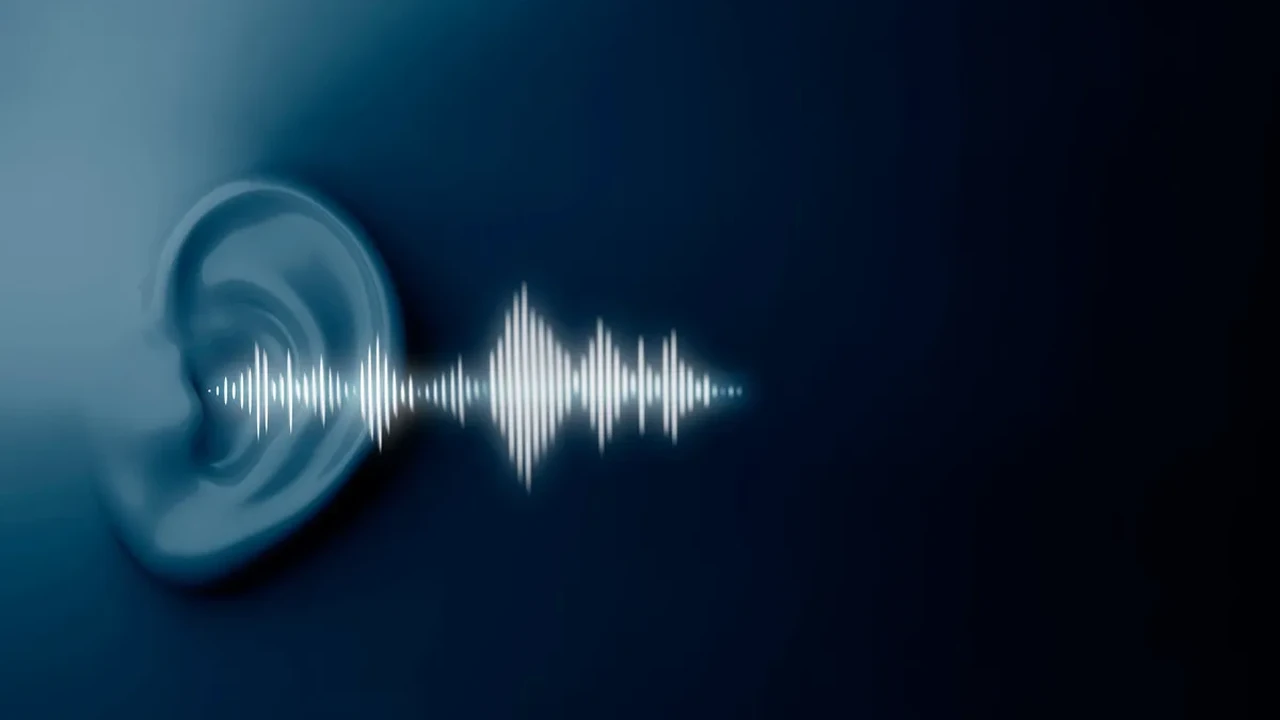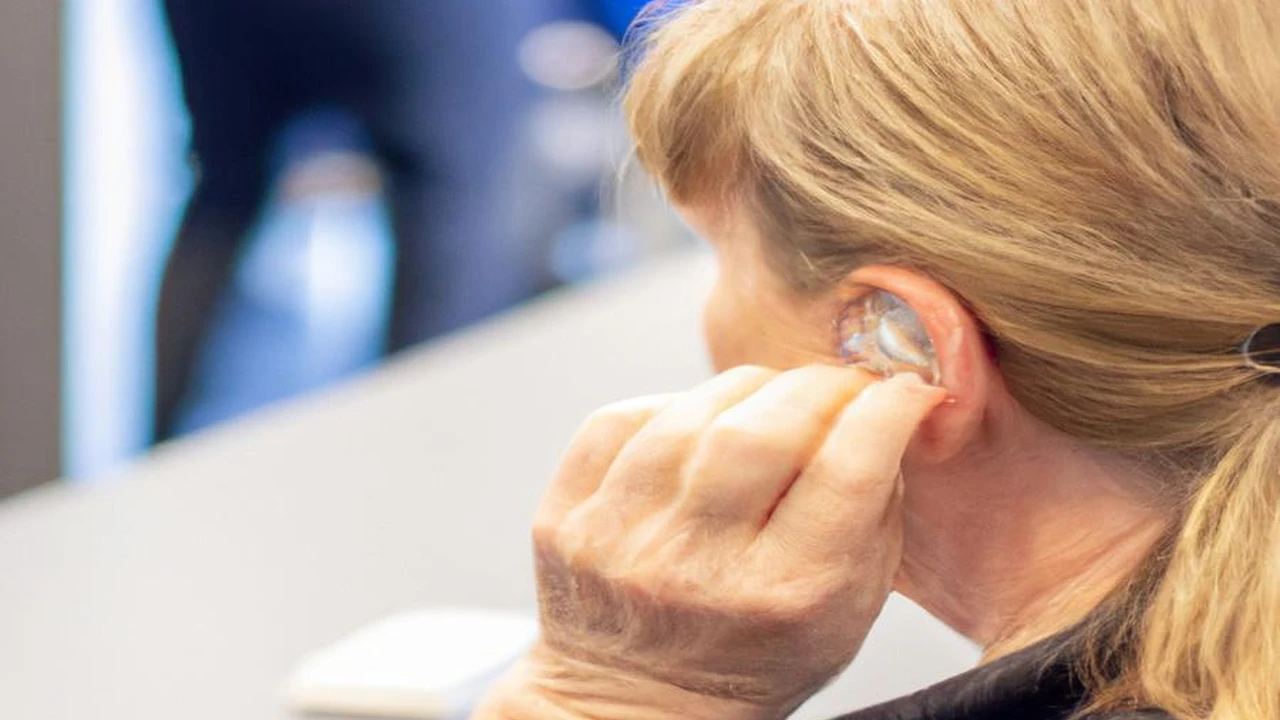Future Trends in Hearing Aid Technology
Look ahead at emerging trends in hearing aid technology, including AI integration, enhanced personalization, and even smaller, more powerful devices.

Look ahead at emerging trends in hearing aid technology, including AI integration, enhanced personalization, and even smaller, more powerful devices.
Future Trends in Hearing Aid Technology
Hey there! Ever wonder what’s next for hearing aids? It’s not just about making things louder anymore. We’re talking about some seriously cool advancements that are going to change how we experience sound and interact with the world. From artificial intelligence making your listening experience super smart to devices that are practically invisible and packed with power, the future of hearing aids is looking incredibly exciting. Let’s dive into what’s on the horizon, explore some specific products, compare them, and even talk about what these innovations might cost you.
AI Integration in Hearing Aids: Smarter Listening Experiences
Artificial Intelligence (AI) is probably the biggest game-changer in hearing aid technology right now. It’s not just a buzzword; AI is making hearing aids incredibly smart, allowing them to adapt to your environment in ways we couldn't have imagined a few years ago. Think of it like having a tiny, super-intelligent sound engineer sitting in your ear, constantly optimizing what you hear.
How AI Enhances Sound Processing and Personalization
Traditional hearing aids have programs you can switch between for different environments – a quiet room, a noisy restaurant, a concert. AI takes this to a whole new level. Instead of you manually switching, AI-powered hearing aids can automatically detect your environment and adjust settings in real-time. They can differentiate between speech and background noise with incredible accuracy, prioritizing conversations and suppressing distractions. This means less effort for you to listen and understand, leading to less listening fatigue.
Personalization is another huge win for AI. These devices learn your preferences over time. Do you prefer a slightly brighter sound in certain situations? Does a particular type of background noise bother you more than others? AI algorithms can learn from your adjustments and feedback, creating a truly bespoke listening experience that evolves with you. Some even offer 'soundscapes' where you can fine-tune specific elements of your environment, like reducing the clatter of dishes while still hearing your dinner companion clearly.
Current AI-Powered Hearing Aid Products and Their Features
Let's look at some of the leading players in the AI hearing aid space:
- Starkey Genesis AI: This is a prime example of AI at its best. The Genesis AI boasts a new processor that’s four times faster than previous models, allowing for incredibly quick and accurate sound analysis. It features 'Neuro Sound Technology' which mimics how the brain processes sound, aiming for a more natural listening experience. It also includes health tracking features, like fall detection and activity monitoring, making it a comprehensive wellness device. The 'Edge Mode+' feature uses AI to instantly optimize sound in challenging environments with a simple tap.
- Phonak Lumity: While not explicitly branded 'AI' in the same way as Starkey, Phonak's AutoSense OS 5.0 system uses machine learning to analyze your sound environment and blend programs for optimal hearing. It's incredibly sophisticated at identifying and adapting to different soundscapes, prioritizing speech in noise. The Lumity also offers excellent Bluetooth connectivity for seamless streaming.
- Oticon Intent: Oticon's latest offering, the Intent, uses a 4D sensor system that understands your listening intentions. It tracks head and body movement, conversation activity, and the acoustic environment to provide personalized sound. This 'user-intent' driven AI aims to give you more control over your listening experience without manual adjustments.
Comparison of AI Features and Pricing
When comparing these, it's clear that each brand has its own flavor of AI. Starkey focuses heavily on integrated health and wellness features alongside superior sound processing. Phonak excels in its automatic environmental adaptation and robust connectivity. Oticon is pushing the boundaries with 'user-intent' driven personalization, aiming for a more intuitive experience.
Pricing: These are premium devices, so expect prices to be on the higher end. A pair of top-tier AI-powered hearing aids from these brands can range from $4,000 to $8,000+ USD, depending on the technology level, features, and the services included by your audiologist. This typically includes professional fitting, follow-up appointments, and warranties. It's a significant investment, but the advanced features often justify the cost for those seeking the best possible hearing experience.
Enhanced Personalization and User Control: Tailoring Your Sound
Beyond AI, the trend towards hyper-personalization is huge. It’s all about giving you more control and making your hearing aids truly yours, not just a generic device.
Customizable Sound Profiles and App Integration
Modern hearing aids are increasingly paired with sophisticated smartphone apps. These apps aren't just for volume control anymore. They allow you to create and save custom sound profiles for specific locations or activities. Imagine having a 'coffee shop' setting that emphasizes voices and reduces clatter, or a 'nature walk' setting that amplifies birdsong. You can fine-tune bass, treble, and mid-range frequencies, and even adjust noise reduction levels, all from your phone.
Some apps also offer guided listening exercises or 'hearing training' programs to help your brain adapt to amplified sound and improve speech understanding over time. This level of user control empowers you to take an active role in managing your hearing.
Examples of Highly Customizable Hearing Aids
- Resound Omnia: Known for its excellent app integration, the Resound Smart 3D app allows for extensive personalization. Users can create custom programs, adjust noise reduction, and even use the 'Hear in Noise' feature to focus on speech from specific directions. It also offers remote fine-tuning by your audiologist through the app.
- Widex Moment: Widex is celebrated for its natural sound quality, and its app allows users to personalize this further. The 'SoundSense Learn' feature uses AI to guide you through A/B comparisons, helping the hearing aid learn your preferences for different sound environments. This creates a truly personalized sound experience.
Comparison of Personalization Features and Pricing
Resound offers a very comprehensive app experience with a strong focus on directional hearing and remote support. Widex, on the other hand, emphasizes natural sound and uses a unique AI-driven learning process to refine your preferences. Both offer a high degree of user control.
Pricing: Similar to the AI-focused models, these highly customizable devices typically fall into the $3,500 to $7,500 USD range per pair, depending on the technology level and included services. The investment here is in the ability to fine-tune your hearing experience to an unprecedented degree, making it truly your own.
Smaller, More Powerful Devices: Discretion Meets Performance
Let's be honest, many people still worry about the aesthetics of hearing aids. The good news is that manufacturers are constantly innovating to make devices smaller, more discreet, and yet more powerful than ever before.
Advances in Miniaturization and Battery Technology
The drive for smaller devices is relentless. We're seeing more and more 'invisible-in-canal' (IIC) and 'completely-in-canal' (CIC) options that sit deep within the ear canal, making them virtually undetectable. This miniaturization is possible thanks to advancements in micro-electronics and more efficient components.
Battery technology is also playing a crucial role. Rechargeable hearing aids are now the norm, offering a full day's power on a single charge, often with portable charging cases. This eliminates the hassle of constantly changing tiny disposable batteries. We're also seeing improvements in energy efficiency, allowing smaller batteries to last longer.
Leading Discreet Hearing Aid Models and Their Advantages
- Phonak Virto Paradise Titanium: This is one of the smallest and most durable custom-made hearing aids available. Made from medical-grade titanium, it's incredibly strong and allows for a thinner shell, meaning it can fit deeper into the ear canal for maximum discretion. It offers excellent sound quality and connectivity despite its tiny size.
- Signia Silk X: The Silk X is a ready-to-wear CIC hearing aid, meaning it doesn't require a custom impression. It comes with different sized silicone sleeves to fit most ear canals, offering immediate discretion. It's incredibly small and offers good sound quality for mild to moderate hearing loss.
- Oticon Own: Oticon's custom-made IIC and CIC models are designed for ultimate discretion. They leverage Oticon's 'BrainHearing' technology, aiming to provide a natural sound experience while being almost invisible.
Comparison of Discreet Options and Pricing
The Phonak Virto Paradise Titanium stands out for its titanium construction, offering both extreme discretion and durability. The Signia Silk X is unique as a ready-to-wear option, making it accessible for those who want immediate discretion without the wait for custom molds. Oticon Own focuses on delivering their signature sound quality in a tiny package.
Pricing: Discreet hearing aids, especially custom-made ones, can be quite an investment due to the precision engineering involved. Prices for these models can range from $3,000 to $7,000 USD per pair. The convenience of rechargeability and the advanced technology packed into such small devices contribute to the cost. The Signia Silk X, being a ready-to-wear option, might sometimes be found at the lower end of this spectrum.
Connectivity and Ecosystem Integration: Beyond Just Hearing
Modern hearing aids are no longer isolated devices; they're becoming integral parts of our digital lives, connecting seamlessly with other technologies.
Direct Streaming, Telehealth, and Smart Home Integration
Direct streaming from smartphones, tablets, and even smart TVs is now a standard feature. This means you can stream phone calls, music, podcasts, and TV audio directly into your hearing aids, turning them into high-quality wireless headphones. This significantly improves clarity and enjoyment, especially in noisy environments.
Telehealth capabilities are also on the rise. Many hearing aid apps allow for remote adjustments by your audiologist, meaning you can get fine-tuning and support from the comfort of your home. This is incredibly convenient, especially for follow-up appointments or minor tweaks.
Looking further ahead, we might see more integration with smart home devices. Imagine your hearing aids alerting you to a doorbell ring, a smoke alarm, or even a notification from your smart refrigerator. The possibilities for enhancing safety and convenience are vast.
Products Leading in Connectivity
- Phonak Lumity and Paradise Series: Phonak is a leader in universal Bluetooth connectivity, meaning their hearing aids can connect directly to almost any Bluetooth-enabled device, including both iOS and Android phones, without an intermediary streamer. This offers unparalleled flexibility for streaming and hands-free calls.
- Resound Omnia: Resound offers excellent connectivity with both iOS and Android devices, including direct streaming from compatible Android phones. Their TV Streamer accessory allows for high-quality audio streaming from your television directly to your hearing aids.
Comparison of Connectivity Features and Pricing
Phonak generally leads in universal Bluetooth compatibility, offering a truly seamless experience across a wide range of devices. Resound also provides robust connectivity, particularly for Apple users and with their dedicated streaming accessories.
Pricing: Hearing aids with advanced connectivity features typically fall within the $3,000 to $7,000 USD range per pair. The value here comes from the convenience and enhanced functionality of being seamlessly connected to your digital world, improving communication and entertainment experiences.
Over-the-Counter OTC Hearing Aids: Accessibility and Innovation
The introduction of Over-the-Counter (OTC) hearing aids in the US market is a significant trend, aiming to make hearing solutions more accessible and affordable for adults with perceived mild to moderate hearing loss.
The Rise of OTC Hearing Aids and Their Technological Advancements
OTC hearing aids are designed to be purchased directly by consumers without a prescription or professional fitting. This model significantly reduces the cost and barrier to entry for many. While initially simpler, OTC devices are rapidly incorporating advanced features seen in prescription models, including app-based customization, rechargeable batteries, and even some level of noise reduction.
The technology in OTC devices is improving quickly, offering more sophisticated sound processing and personalization options than early models. This trend is pushing the entire industry to innovate and offer more value at different price points.
Notable OTC Hearing Aid Products and Their Offerings
- Jabra Enhance Plus: These are designed to look like earbuds but function as hearing aids for mild to moderate hearing loss. They offer good sound quality, app-based customization, and are very discreet. They also double as high-quality earbuds for music and calls.
- Lexie B2 Powered by Bose: This collaboration brings Bose's audio expertise to the OTC market. The Lexie B2 offers self-fitting capabilities through an intuitive app, good sound quality, and rechargeable batteries. It focuses on ease of use and effective amplification for common listening situations.
- Sony CRE-C10 and CRE-E10: Sony has entered the OTC market with sleek, discreet designs. The CRE-C10 is a small, in-ear device, while the CRE-E10 resembles a traditional earbud. Both offer app-based control and aim for a natural sound experience for mild to moderate hearing loss.
Comparison of OTC Options and Pricing
Jabra Enhance Plus offers a hybrid earbud/hearing aid experience, appealing to those who want multi-functional devices. Lexie B2 leverages Bose's sound engineering and focuses on user-friendly self-fitting. Sony brings its reputation for audio quality and sleek design to the table.
Pricing: OTC hearing aids are significantly more affordable than prescription models. Prices typically range from $800 to $2,000 USD per pair. This lower price point makes them an attractive option for individuals with mild to moderate hearing loss who are comfortable with self-management and don't require the extensive services of an audiologist.
Future Innovations on the Horizon: What Else to Expect
Beyond these major trends, there are even more exciting developments brewing in the labs and R&D departments.
Biometric Sensors and Health Monitoring
We're already seeing some hearing aids with fall detection and activity tracking. In the future, expect more sophisticated biometric sensors. Hearing aids could monitor heart rate, body temperature, and even brain activity. This could turn them into powerful health monitoring devices, providing early warnings for various health conditions and contributing to overall wellness.
Augmented Reality AR Hearing Aids
Imagine hearing aids that can not only amplify sound but also provide real-time information about your surroundings. Augmented reality hearing aids could identify who is speaking, translate foreign languages in real-time, or even provide navigation cues. This would blend the auditory world with digital information, creating a truly immersive and informative experience.
Non-Invasive Brain-Computer Interfaces
This is a bit further out, but research into non-invasive brain-computer interfaces (BCIs) could eventually lead to hearing aids that are controlled by thought. This would offer an unprecedented level of intuitive control and personalization, allowing users to effortlessly focus on specific sounds or filter out distractions simply by thinking about it.
Energy Harvesting and Longer Battery Life
While rechargeable batteries are great, imagine hearing aids that never need charging. Researchers are exploring energy harvesting technologies, where devices could draw power from body heat, movement, or even ambient radio waves. This could lead to truly 'set it and forget it' hearing solutions with virtually infinite battery life.
Choosing Your Future Hearing Aid: What to Consider
With all these amazing advancements, how do you choose? It really comes down to your individual needs, lifestyle, and budget.
- Your Hearing Loss: For severe to profound hearing loss, prescription devices with professional fitting and ongoing support will likely remain the best option. For mild to moderate loss, OTC options are becoming increasingly viable.
- Lifestyle: Are you very active? Do you spend a lot of time in noisy environments? Do you value discretion above all else? Your daily activities will influence which features are most important to you.
- Budget: Hearing aids are an investment. Understand what you're willing to spend and explore financing options, insurance coverage, and government programs if needed.
- Technology Comfort: Are you comfortable with smartphone apps and self-adjustments, or do you prefer a more hands-off approach with professional support?
- Professional Guidance: Even with OTC options, consulting an audiologist for a comprehensive hearing test and advice is always a good idea. They can help you understand your specific hearing loss and guide you towards the best solution.
The future of hearing aid technology is bright, promising more natural sound, greater personalization, enhanced connectivity, and increased accessibility. It's an exciting time to be exploring solutions for better hearing!
:max_bytes(150000):strip_icc()/277019-baked-pork-chops-with-cream-of-mushroom-soup-DDMFS-beauty-4x3-BG-7505-5762b731cf30447d9cbbbbbf387beafa.jpg)






